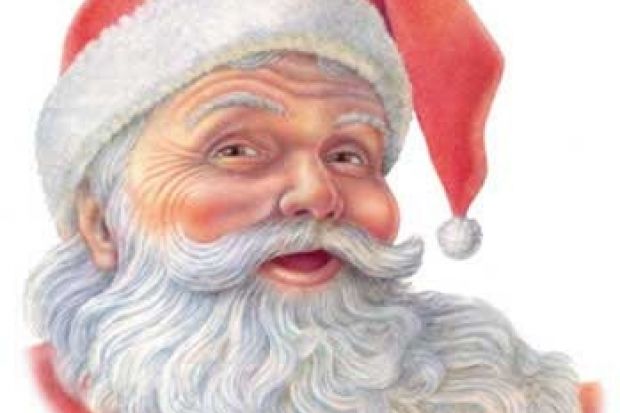From the dangers of “turkey back” to the secrets of Santa’s sexiness, universities across the land have served up weird and wonderful festive titbits this Christmas.
As well as commonplace tales of staff and students spreading Christmas cheer by delivering gifts to the elderly or raising money by singing carols, institutions have presented a host of more unusual efforts.
The University of St Andrews pushed the boat out with a study by a team of psychologists into “Santa’s sexiness”.
Experts found that it is St Nick’s tubby tummy, rosy glow, kindness to children and status as head of a worldwide holiday economy that make him a desirable mate.
Meanwhile, the British College of Osteopathic Medicine has an even more unusual offering: ways to prevent festive ailments including one it calls “turkey back”.
As part of a Festive Season Survival Guide, the college advised on how to stay upright in high heels and how to cope with hangovers, before detailing the risks to Christmas cooks of straining their back while placing a heavy turkey in the oven.
Food and drink are common themes in a number of universities’ festive news releases.
The University of Brighton provides information on how much walking, horse riding or mountain biking is needed to work off a Christmas bulge caused by scoffing a turkey dinner, mince pies, Christmas pudding, a few chocolates and some mulled wine. For example, a 2,000-calorie turkey dinner with all the trimmings would be dealt with by an 18-mile walk or a three-and-three-quarter-hour bike ride.
The University of the West of Scotland takes the opportunity to link Christmas bingeing to Scotland’s fight against obesity, while Leeds Metropolitan University, highlighting a weight-management initiative, says that youngsters can often consume nearly four times their recommended daily amount of calories on Christmas Day.
The seasonal fun does not end there. A YouTube video shows scientists at the University of Nottingham trimming a chemistry Christmas tree, on which the usual tinsel, baubles and chocolates have been replaced with plastic models of molecules.
Those of a more reflective and sober nature could spend time with a University of Warwick study of when Christmas was banned in England or an article by Cardiff University’s School of Biosciences on “why robins don’t get fat”.
